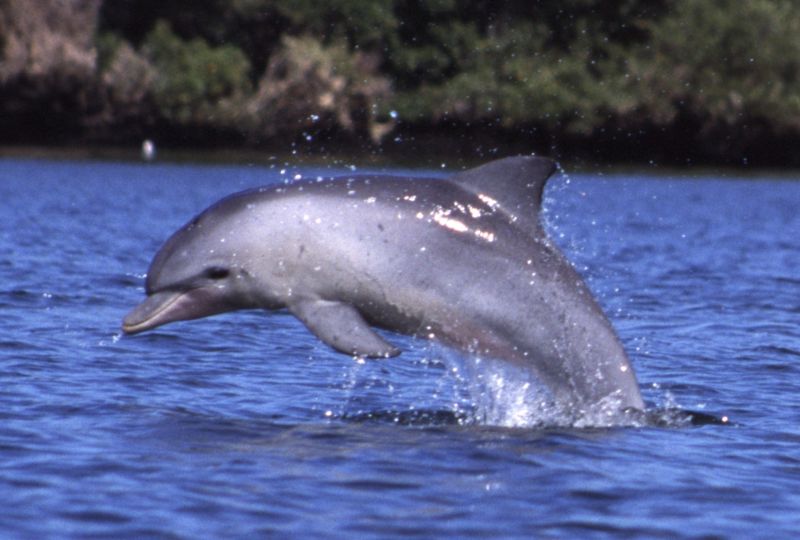Sleeping and Breathing

For people to survive — and this is true for mammals, generally — we need to do three basic things: sleep, breathe, and eat/drink. Luckily for us, we don’t have to do the last one constantly, which would be impossible when we sleep. And also luckily for us, breathing — while required around the clock — happens subconsciously. Otherwise, we’d suffocate in our sleep. It’s just one of the really neat ways that we humans are designed to survive.
But imagine if breathing was a conscious act — one you had to intentionally perform, and, therefore, be awake to do. How could we sleep and breathe at the same time? We — humans — probably can’t. But there are other mammals for whom breathing happens only consciously, most notably dolphins and whales. Because they live and eat while underwater but, unlike fish, cannot extract oxygen from the ocean, these animals need to come to the surface to breathe. And to do that, they need to be awake. But their brains need rest, just like ours do. Their solution:
Whales and dolphins turn off only half their brains at a time.
According to Scientific American, these mammals of the sea have a weird way of catnapping. For two hour stretches, bottlenose dolphins (like the one seen above) swim near the surface of the water, with half their brain (and the opposite eye) asleep. The active side of the brain (and the other eye) functions at a lower than typical level — akin to the feeling we people get when we’re on the verge of falling asleep, but not quite out yet. This way, the dolphins’ and whales’ brains can send the “go above water and take a breath” signal needed to survive. And at the end of the two hour shift, the resting brain wakes up and the active one goes to sleep. All together, according to HowStuffWorks, these creatures spend eight hours a day in this half-awake, half-asleep state.
This neat little trick of nature also has a secondary benefit. Because these creatures do not have homes, they can’t seek shelter from predators — so going to sleep means being susceptible to attack. However, one need not be fully awake to avoid harm’s way. Whales and dolphins can avoid attacks even in this state of lower brain function, fleeing the area when a threat approaches.
Bonus fact: Sea otters are marine mammals that can survive on land but mostly live in the ocean. They sleep on the water’s surface, typically. To keep from drifting away, some sea otters link paws while asleep, as seen here.
From the Archives: Going the Distance: Birds which travel extreme distances in single flights. How do they sleep during their treks? They don’t.
Related: “The Mind at Night: The New Science of How and Why We Dream” by Andrea Rock. 4.5 stars on 20 reviews. Available on Kindle.

Leave a comment